The Osprey Packs Atmos AG 65 (new in 2022) is a multi-day backpack suitable for trips up to a week in length, with a suspended mesh frame and an adjustable length torso and hip belt so you can get a custom, personalized fit. Rated for loads up to 40 pounds, the fit of the Atmos AG is nothing short of remarkable with a well-padded and robust hip belt that wraps you in a warm embrace and makes heavy loads feel lightweight. Fully featured with a multitude of pockets and access methods, the Atmos AG 65 is the pinnacle of ventilated backpack design to keep you cooler and drier in hot weather on the trail or when traveling to a remote destination. The corresponding women’s model is called the Osprey Aura 65.
Specs at a Glance
- Gender: Men’s (the women’s model is the Osprey Aura 65)
- Type: Internal frame
- Weight: 4.6 lbs / 73.6 oz / 2.07 kg
- Size tested: S/M (torso length 17″-20″)
- Pockets: 8 + main compartment
- Adjustable length torso: Yes
- Adjustable length shoulder straps: Yes
- Adjustable length hip belt: Yes
- Suspended mesh back panel: Yes
- Load lifters: Yes
- Hip belt pockets: Yes
- Floating lid: Yes
- Raincover: Included
- Hydration compatible: Yes, center port
- Trekking pole carry: Yes
- Access methods: 4 – Top, sides (2), sleeping bag hatch
- Max recommended load: 40 lbs
- Bear canister compatibility: BV500 (vertical); all other BV sizes (horizontal)
- Materials: Recycled 210D and 500D high tenacity nylon, PFC/PFAS-free DWR
Atmos AntiGravity Backpack Frame
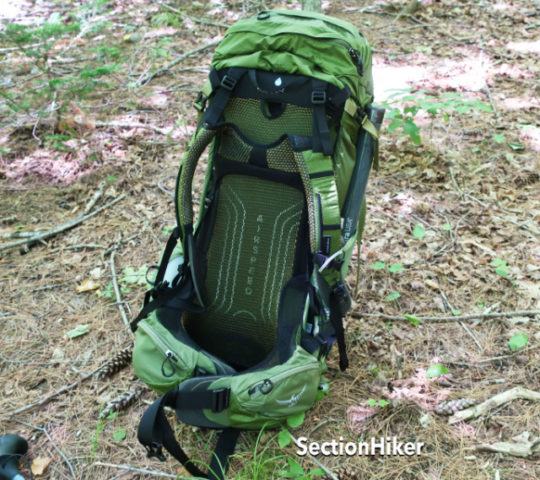
The Osprey AntiGravity Backpack Frame and Suspension system revolutionized backpacking when it first came out because it was the first suspended-mesh ventilation system that married the hip belt, back panel, and shoulder straps with a continuous run of breathable mesh.
In addition to keeping you cooler and drier, the unification of the mesh, the shoulder yoke, and the hip belt create a non-slip, torso-hugging fit, particularly around the back of the hips and sides of the hip belt which do most of the work carrying backpack weight. This is the main reason why heavy loads feel lighter and more comfortable when carried in an Atmos because the hip belt is doing the work that it’s supposed to do with maximum efficiency.
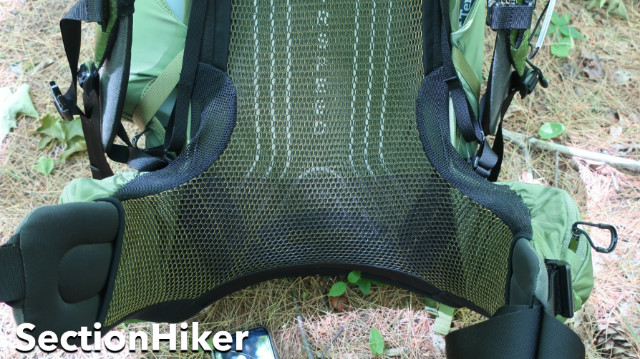
One thing worth noting about the hip belt is that it is quite assertive in its curvature and really hugs the hips, in a way that is nothing like backpacks with a more relaxed, independent hipbelt that hangs loose when it’s not secured. I’ve seen it referred to as the “jaws of life,” which is an uncannily apt description. You get used to it quickly, but it can be offputting when you first try on the pack.
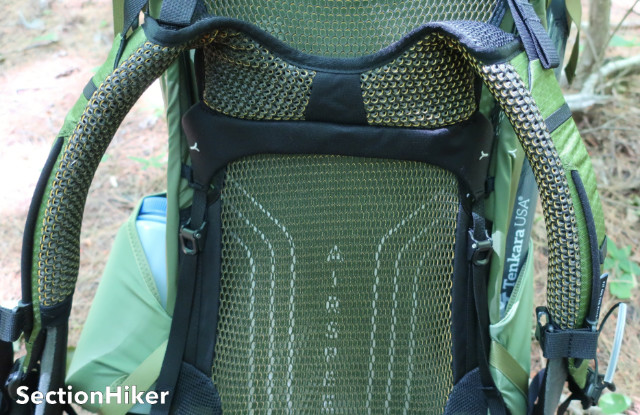
The Atmos 65 also builds in three tiers of adjustment so you can dial in a custom fit that matches your personal dimensions.
- The torso length can be made longer or shorter by raising or lowering the shoulder strap yoke using a simple webbing strap adjustment attached to the sides of the aluminum perimeter frame. You’re not limited to full or half sizes, so you can dial in an exact fit.
- The shoulder strap length can also be adjusted using a rip and stick mechanism (Fit-on-the-Fly) to match the width of your shoulders and depth of your chest for improved comfort without having to replace the entire shoulder strap assembly. This is essential for people with bigger builds.
- The padded portion of the hip belt can be lengthened to provide a better wrap around the sides and front of your hip bones which is essential for effective load transfer. (See: How Should a Backpack Hip Belt Fit) Lengthening the hip belt does not move the hip belt pockets forward however and while they’re still reachable, you may need two hands to work their zippers.
Most backpacks lack these adjustment capabilities and force you to squeeze into a set of fixed-length torso and hip belt lengths resulting in sub-optimal load transfer, so your pack feels heavier than it should. While they may be lighter weight than the Atmos 65, you have to work harder to carry them which adds up as you rack up the miles.
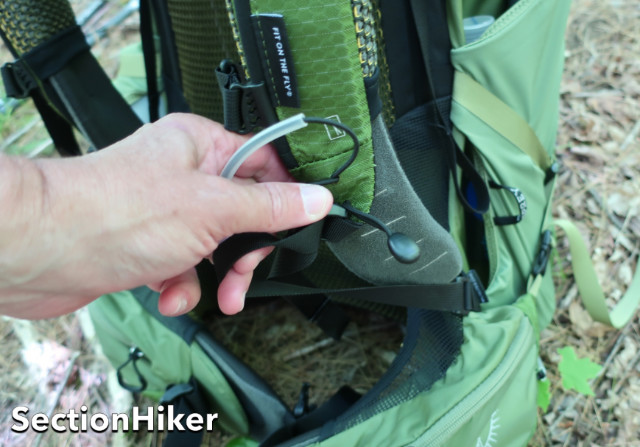
For example, I just hate it when the torso length of a backpack is a little too long on me and the pack sways back and forth on my shoulders as I hike or when the padded portion of a backpack’s shoulder straps are too short and they rub uncomfortably inside my armpits. The same goes with hip belt lengths when they’re too short and you get no load transfer to the front of the hip bones. The adjustment features of the Atmos 65 eliminate those issues, which are even more important when you have to carry more weight.

But, if you’re not familiar with the nuances of fitting a backpack, I suggest asking a friend with more experience to help you make comfortable and effective adjustments. When doing so, I would recommend putting about 25-30 pounds of gear in the pack to simulate real-world conditions. Once adjusted, you’ll be amazed at how good the Atmos 65 feels.
Backpack Pockets and Access Methods
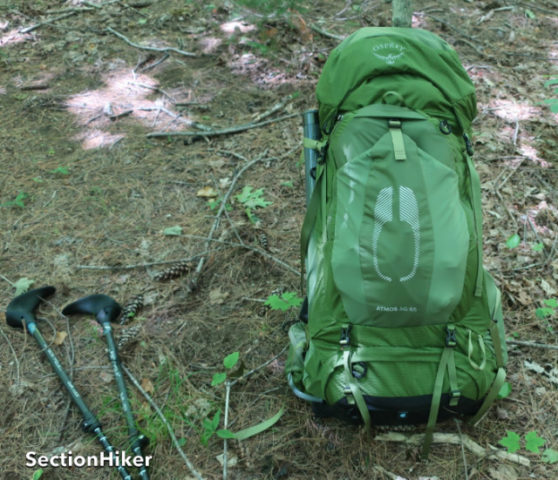
The Atmos AG is a top-loading backpack with a floating top lid that has two pockets, a main compartment with an optional sleeping bag compartment, a rear shovel pocket, two long side pockets, a rain cover pocket, and enormous hip belt pockets.
The contents of the main compartment can be accessed in four different ways: from the top by removing the lid, from side zippers located along both sides, or from the bottom via the sleeping bag hatch. Multiple access methods make it much easier to use higher-capacity backpacks and are a real convenience.
However, it is a little odd that the two side zippers are independent of one another and do not meet to create a panel that you can fold down to give complete access to the main compartment. The Gregory Baltoro 65 (see our review), which is the closest comparable pack to the Atmos 65, has this feature and it is quite convenient.

Floating Top lid
The top lid on the Atmos AG 65 has two zippered pockets. The bottom pocket is much larger than the top one and good for a first aid kit, toiletries, and electronics (all at the same time). The top pocket is smaller and good for storing a map, compass, and other personal items.
The top lid is considered floating because you can raise it up above the main compartment by lengthening the webbing straps that connect it to the top of the pack. You’d do this if you need to wedge more gear between the top lid and the main compartment such as a rope, a bear canister, or a bulky sleeping pad (see External Attachment Guide.) Gone however in this new model, is the minimalist flap jacket which would cover the main compartment opening if you remove the floating lid.
Main compartment
The main compartment has an internal hydration pocket and reservoir hang loop, along with a central hydration port that comes out at the top of the pack between your shoulder blades.

There’s also an optional fabric shelf that you can deploy if you want to create a separate sleeping bag compartment at the base of the back as well as an external zipper that lets you access the compartment’s content. The shelf is attached to webbing loops that can be adjusted to fit a very large sleeping bag or folded back if you want to use the main compartment as one big storage space.
Front Shovel Pocket
The Atmos AG 65 has a shovel pocket on the front of the pack that’s open on top and secured with a buckle. This pocket is good for storing a climbing helmet, wet items, such as a water filter, or extra layers that you want quick access to without opening the main compartment of your pack.
Side Pockets
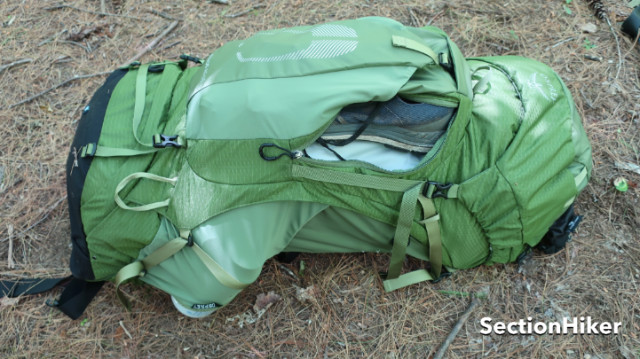
There are also two new long zippered side pockets on either side of the shovel pocket that are good for storing shoes or jackets you want easy access to. The Gregory Baltoro 65 also has similar pockets (see our review).
Water Bottle Pockets
The side water bottle pockets on the Atmos AG are made out of mesh and have a top opening and a side opening if you want to be able to access them holster style. When wearing the Atmos AG 65, I can only grab a water bottle and replace it, if it’s holstered sideways, but not if it’s positioned vertically.
Hip Belt Pockets

One of the standout features of the Atmos 65 are the hip belt pockets which are simply huge and capable of holding maps, snacks, gloves, hats, and any number of items you want frequent or quick access to.
Access Methods
The Atmos 65 has four different access points to get to the contents of the main compartment: under the top lid, through the sleeping bag compartment, and side zippers on both sides of the shovel pocket. The latter make it possible to access pack contents on the move and are a common feature on high-capacity packs. Frankly, I wish they were more common on all 60+ liter backpacks because they are so useful.

Compression and External Attachment Points
If there’s one area of weakness on the Atmos AG 65, it’s the compression and external attachment system. It’s not a big deal if you use the pack for three-season backpacking trips, but it does limit the pack’s utility for winter and more challenging expedition-style hiking. Still, there are numerous workarounds if you get creative (See What Are The Straps On The Outside of a Backpack For?)
The Atmos AG 65 has two tiers of compression straps:
- a zig-zag strap along the bottom of the pack that runs over the water bottle pockets, but whose main purpose is to pull the bottom of the pack closer to your hips.
- a top compression strap.
While these straps can be used to secure tall thin objects like tent poles or fishing rods in the side water bottle pockets, they’re not good for securing bulky gear to the sides of the pack like snowshoes because the straps are too far apart and not horizontally oriented.
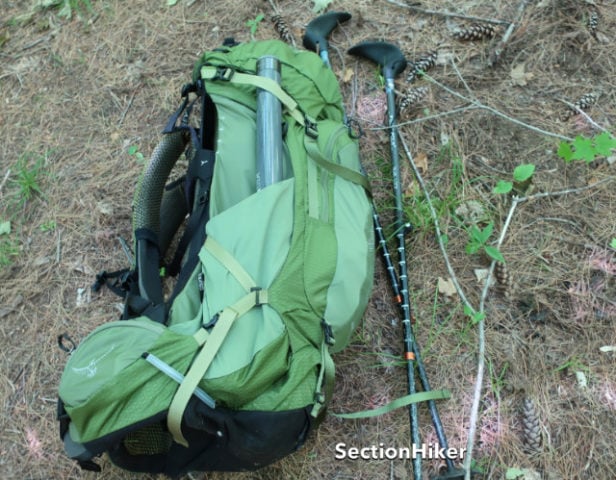
In addition, there are two webbing straps that run over the sleeping pad pocket for carrying a foam pad or tent body. They are both removable if you don’t need them. There’s also a single ice axe loop, but no shaft holder, unless you rig one up with cord. Finally, the Atmos comes with Osprey’s trekking pole carry system which is very convenient when scrambling and can be used without removing the backpack.
Comparable Backpacks
| Make and Model | Weight | Access |
|---|---|---|
| Gregory Baltoro 65 | 4 lbs 14.4. oz | Top, front, bottom |
| Gregory Baltoro 75 | 4 lbs 15.7 oz | Top, front, bottom |
| Gregory Katmai 65 | 4 lbs 11.8 oz | Top, bottom, side |
| Gregory Paragon 68 | 3 lbs 11 oz | Top, bottom, side |
| Mountain Hardwear AMG 75 | 4 lbs 15.4 oz | Top |
| Osprey Aether 65 | 4 lbs 14.7 oz | Top, front, bottom |
| Osprey Aether Plus 70 | 5 lbs 8 oz | Top, front, bottom |
| Osprey Aether Pro 70 | 3 lbs 15 oz | Top |
| Osprey Atmos AG 65 | 4 lb. 9 oz | Top, bottom, 2 sides |
| REI Trailbreak 60 | 3 lbs 13 oz | Top, bottom |
Recommendation
The Osprey Atmos 65 is one of Osprey’s most popular backpacks and with good reason: the thing is just loaded with features and a suspension system that is out-of-this-world comfortable to use. Weighing 4 lbs 9 ounces, it is on the heavy side compared to much lighter backpacks, but it has many more pockets and can carry more gear and more supplies, without collapsing under the load. If you’re looking for a pack for a weeklong trip off the beaten path, the Atmos 65 is definitely a contender.
The thing that really set the Atmos 65 apart is its AntiGravity suspension system which integrates the shoulder straps and hip belt into a single uniform system that molds to your body shape. With an adjustable torso, shoulder straps, and hip belt, hikers need never suffer a poor-fitting pack again. If you’ve had difficulty finding a backpack that fits you well and need to carry 40 pounds, I’d encourage you to try on an Osprey Packs Atmos AG 65 or its smaller counterpart the Atmos AG 50. It may be the last backpack you ever buy.
Compare 6 Prices
-
 REI$290.00View
REI$290.00View -

 Osprey Packs$290.00View
Osprey Packs$290.00View -
 REI$315.00View
REI$315.00View -

 Amazon US$324.83View
Amazon US$324.83ViewAmazon.com Price: $324.83 (as of 04/24/2024 10:09 GMT-0400) Details
Product prices and availability are accurate as of the date/time indicated and are subject to change. Any price and availability information displayed on Amazon.com at the time of purchase will apply to the purchase of this product.
-
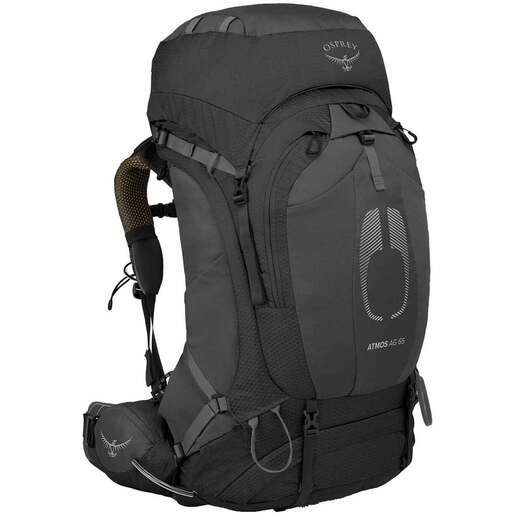
 Sportsman's Warehouse$339.95View
Sportsman's Warehouse$339.95View -
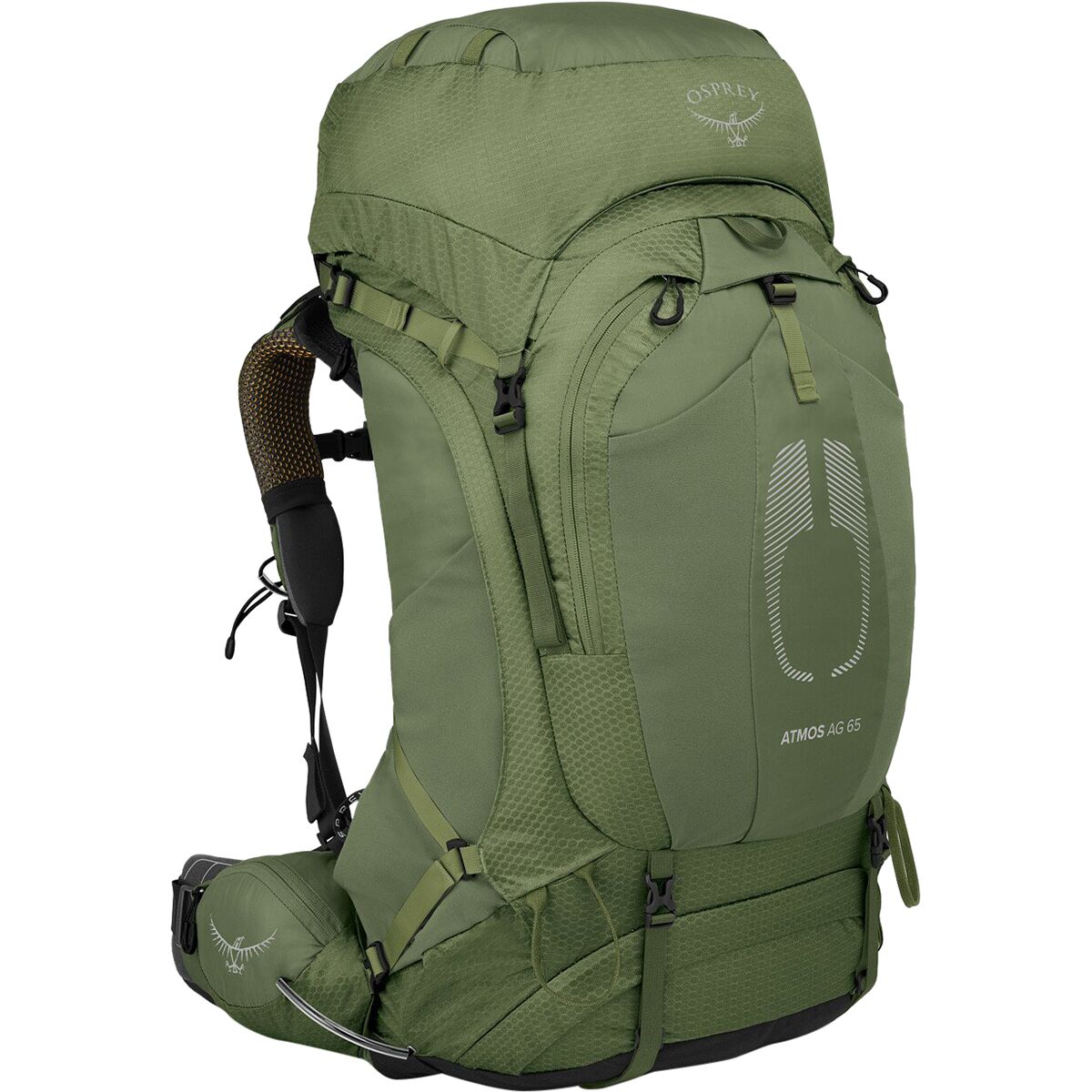
 Backcountry.com$340.00View
Backcountry.com$340.00View -

 Eastern Mountain Sports$340.00View
Eastern Mountain Sports$340.00View -

 Osprey Packs$340.00View
Osprey Packs$340.00View
Disclosure: The author owns this backpack
SectionHiker is reader-supported. We only make money if you purchase a product through our affiliate links. Help us continue to test and write unsponsored and independent gear reviews, beginner FAQs, and free hiking guides. SectionHiker.com Backpacking Gear Reviews and FAQs
SectionHiker.com Backpacking Gear Reviews and FAQs 


Thanks to your recommendation I’ve been using this pack in my backcountry caretaking job in the Whites. It was a good choice. I’ve been able to carry loads close to 50 lbs. though not as comfortably of course as when it’s under 35. The degree of adjustability is a game changer from other packs I’ve used.
Chris! Glad that’s worked out. One of these days I’ll get up to Nauman to visit you.
so I’m looking for a comfortable weekend pack and was looking at the 50L. I’ve tried various lighter weight type of packs and just haven’t found a great fit… I was able to try on the 65L at our local outfitter and it was quite comfy with 25lbs in it, so my assumption would be the 50 fits the same lol. My question is, in your opinion, do you think the 50L would be suitable for a weekend/overnight type of pack?
Sure, I’ve used their Atmos 50 before. yes. It makes a fine weekend pack. Fits just like the bigger 65L one.
So next question in the line, is space wise, is this considerably larger than say, the Gossamer Gear Gorilla 50? I know they measure differently and ultimately they are wildly different packs, but I recently tried the GGG50 and my kit fit in it just fine (about 15-18lbs depending on what I bring… but it just wasn’t as comfy as the Atmos…
I’m trying to go a little less UL so I can bring my kiddos with me more often. I just don’t need some huge 60L or larger pack for the weekend warrior type trips we take…
The Atmos 50 has 50L of closed-covered storage. The gorilla has 32 Liters. Just depends on how you pack.
As always, great review! Do you see any benefits to the LT version of the Atmos 65? Approx 1 lb lighter and giving up some features. Looks promising maybe?
It’s lighter by a bit. That’s all I really know. Sorry.
i took the Atmos 65 on a 1000 mile trip carrying 60 tp 70 lbs and it held up like a champ. I will never buy another brand. This pack has many more miles of life left
I purchased this backpack in 2022 and walked the Camino Norte 825km in 35 days it is an excellent backpack it is so comfortable.
Well worth the investment ?
Tried one on today with perhaps 22 lbs nicely stacked. I’ve a 20 inch torso so at the upper end of the s/m and lower end of the l/xl on the Osprey measuring tool. Sales fellow thought the l/xl looked like a better fit, but the s/m felt better in terms of a closer fit. More confident feel if a bit of scrambling I suspect. At 5 10 my leaning is to stay with smaller size. Appreciate any advice!
I’d go with the larger size if your load lifter straps aren’t at a 30+ degree angle. You really want those to work with a heavier load.
Perfect . Thank you!